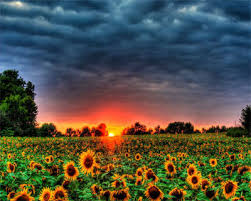Source (Google.com.pk)
Wallpapers Cool Biography
Some might not have noticed the great roles background images have played. For instance, forumites uses cool design background before messages in their forum signatures; some product graphic advertisements uses light subtle background to help create focus point; your website and desktop need nice backdrops too. Sometimes when I get a little limited by the amount of content I can insert onto an ad design, I’ll paint a light background behind it so the entire creative don’t look so empty.
Here’s 12 really nice cool wallpapers and background design Photoshop tutorials you might want to take a look at. It’s probably not about getting the exact effect they’ve got, but to pickup the technique and see how you can advance from there.
Wallpaper, using the printmaking technique of woodcut, gained popularity in Renaissance Europe amongst the emerging gentry. The social elite continued to hang large tapestries on the walls of their homes, as they had in the Middle Ages. These tapestries added color to the room as well as providing an insulating layer between the stone walls and the room, thus retaining heat in the room. However, tapestries were extremely expensive and so only the very rich could afford them. Less well-off members of the elite, unable to buy tapestries due either to prices or wars preventing international trade, turned to wallpaper to brighten up their rooms.
Early wallpaper featured scenes similar to those depicted on tapestries, and large sheets of the paper were sometimes hung loose on the walls, in the style of tapestries, and sometimes pasted as today. Prints were very often pasted to walls, instead of being framed and hung, and the largest sizes of prints, which came in several sheets, were probably mainly intended to be pasted to walls. Some important artists made such pieces - notably Albrecht Dürer, who worked on both large picture prints and also ornament prints - intended for wall-hanging. The largest picture print was The Triumphal Arch commissioned by the Holy Roman Emperor Maximilian I and completed in 1515. This measured a colossal 3.57 by 2.95 metres, made up of 192 sheets, and was printed in a first edition of 700 copies, intended to be hung in palaces and, in particular, town halls, after hand-coloring.
Very few samples of the earliest repeating pattern wallpapers survive, but there are a large number of old master prints, often in engraving of repeating or repeatable decorative patterns. These are called ornament prints and were intended as models for wallpaper makers, among other uses.
England and France were leaders in European wallpaper manufacturing. Among the earliest known samples is one found on a wall from England and is printed on the back of a London proclamation of 1509. It became very popular in England following Henry VIII's excommunication from the Catholic Church - English aristocrats had always imported tapestries from Flanders and Arras, but Henry VIII's split with the Catholic Church had resulted in a fall in trade with Europe. Without any tapestry manufacturers in England, English gentry and aristocracy alike turned to wallpaper.












Wallpapers Cool Biography
Attractive wallpaers to any graphics, banners or ads are relatively
important. Getting the correct theme, whether it’s an abstract art,
vector, or texture pattern, it somehow makes the entire artwork looks
more interesting.
Some might not have noticed the great roles background images have played. For instance, forumites uses cool design background before messages in their forum signatures; some product graphic advertisements uses light subtle background to help create focus point; your website and desktop need nice backdrops too. Sometimes when I get a little limited by the amount of content I can insert onto an ad design, I’ll paint a light background behind it so the entire creative don’t look so empty.
Here’s 12 really nice cool wallpapers and background design Photoshop tutorials you might want to take a look at. It’s probably not about getting the exact effect they’ve got, but to pickup the technique and see how you can advance from there.
Wallpaper, using the printmaking technique of woodcut, gained popularity in Renaissance Europe amongst the emerging gentry. The social elite continued to hang large tapestries on the walls of their homes, as they had in the Middle Ages. These tapestries added color to the room as well as providing an insulating layer between the stone walls and the room, thus retaining heat in the room. However, tapestries were extremely expensive and so only the very rich could afford them. Less well-off members of the elite, unable to buy tapestries due either to prices or wars preventing international trade, turned to wallpaper to brighten up their rooms.
Early wallpaper featured scenes similar to those depicted on tapestries, and large sheets of the paper were sometimes hung loose on the walls, in the style of tapestries, and sometimes pasted as today. Prints were very often pasted to walls, instead of being framed and hung, and the largest sizes of prints, which came in several sheets, were probably mainly intended to be pasted to walls. Some important artists made such pieces - notably Albrecht Dürer, who worked on both large picture prints and also ornament prints - intended for wall-hanging. The largest picture print was The Triumphal Arch commissioned by the Holy Roman Emperor Maximilian I and completed in 1515. This measured a colossal 3.57 by 2.95 metres, made up of 192 sheets, and was printed in a first edition of 700 copies, intended to be hung in palaces and, in particular, town halls, after hand-coloring.
Very few samples of the earliest repeating pattern wallpapers survive, but there are a large number of old master prints, often in engraving of repeating or repeatable decorative patterns. These are called ornament prints and were intended as models for wallpaper makers, among other uses.
England and France were leaders in European wallpaper manufacturing. Among the earliest known samples is one found on a wall from England and is printed on the back of a London proclamation of 1509. It became very popular in England following Henry VIII's excommunication from the Catholic Church - English aristocrats had always imported tapestries from Flanders and Arras, but Henry VIII's split with the Catholic Church had resulted in a fall in trade with Europe. Without any tapestry manufacturers in England, English gentry and aristocracy alike turned to wallpaper.
Wallpapers Cool
Wallpapers Cool
Wallpapers Cool
Wallpapers Cool
Wallpapers Cool
Wallpapers Cool
Wallpapers Cool
Wallpapers Cool
Wallpapers Cool
Wallpapers Cool
Wallpapers Cool
Wallpapers Cool
Wallpapers Cool
No comments:
Post a Comment